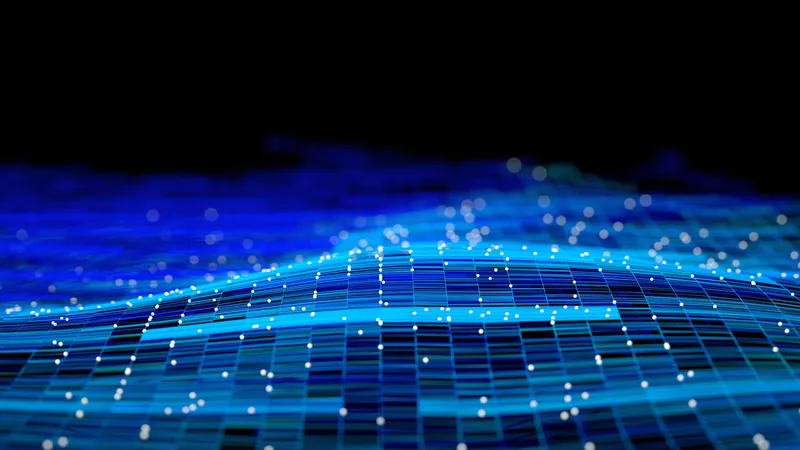
Make the Leap: Why KDE Plasma 6.4 is Your Best Bet for Leaving Windows Behind
2025-06-23
Author: Siti
If you're contemplating a switch from Windows 10 to Linux, the recent release of KDE Plasma 6.4 might just be the nudge you need. As a long-time fan of Linux Mint Cinnamon, I've explored various desktop environments, but KDE Plasma's latest upgrade has captured my attention.
I decided to test KDE Plasma 6.4 on my aging yet capable Dell XPS 8300, equipped with a 3.4GHz Intel Core i7-2600, 16GB DDR3 RAM, and a spacious 1.5TB hard drive. While this machine can still handle Windows 10, it shines with Linux — particularly openSUSE Tumbleweed, which has integrated the latest Plasma 6 environment seamlessly.
KDE Plasma 6.4 is a game-changer, featuring an array of enhancements designed to improve accessibility, productivity, and system integration. This release solidifies KDE's reputation for offering a highly customizable and user-friendly interface.
One standout aspect of Plasma 6.4 is its commitment to inclusivity. New keyboard navigation options, improved screen reader support, and enhanced text readability make the desktop more accessible to all users. The updated Breeze Dark theme also provides better contrast for easier readability.
With the rise of high-quality displays, Plasma 6.4 introduces a High Dynamic Range calibration wizard, simplifying color and brightness adjustments for compatible screens. These enhancements are particularly advantageous for graphic designers, video editors, and gamers who demand the best visual quality.
A quirky yet thoughtful improvement allows users to control the mouse pointer using the number pad or a three-finger gesture on the touchpad. This feature is a lifesaver for anyone dealing with physical limitations, including myself — I’ve discovered it helps immensely with managing carpal tunnel issues.
Another exciting feature is custom per-virtual-desktop tiling, letting you create unique window layouts for each virtual workspace. Plus, a new session restore protocol seamlessly reopens your apps and windows just as you left them after rebooting.
Plasma 6.4 also enhances the login experience: when a login dialog appears, the desktop background dims automatically, making it easier to spot the password field. This simple yet effective tweak can save time when you're racing to log in.
Under the hood, Plasma 6.4 continues to support both Wayland and X11 protocols, but has split the codebases to accelerate Wayland's development — a crucial step, as around 80% of users now favor that option.
The update is built on Qt 6.8 and KDE Frameworks 6.14, delivering a "smoother, friendlier, and more helpful" user experience, according to developers.
For file management aficionados, the legendary Dolphin file manager has finally fixed its drag-and-drop issues after 18 long years! You can now move files without unnecessary prompts—just activate the setting under System Settings.
Spectacle, KDE’s screenshot utility, has also been revamped. Just hit the Print Screen key, and you’ll enter selection mode without hassle, allowing you to capture any part of your screen with ease.
Additionally, the Iinfo Center now features a comprehensive energy page and real-time temperature monitoring for your CPU and GPU. Users can keep track of free space across non-cache partitions and monitor GPU usage across processes.
As a parting note for anyone still on the fence about jumping ship, remember that Microsoft's support for Windows 10 is dwindling. The KDE Community is ready to help you transition, especially with the End of 10 initiative geared towards making Linux migration smoother.
Ready to experience KDE? Besides openSUSE Tumbleweed, you can find this dynamic desktop environment on other distributions like KDE neon, Fedora KDE Plasma Spin, EndeavorOS, and CachyOS. Your journey to a more liberating computing experience awaits!



 Brasil (PT)
Brasil (PT)
 Canada (EN)
Canada (EN)
 Chile (ES)
Chile (ES)
 Česko (CS)
Česko (CS)
 대한민국 (KO)
대한민국 (KO)
 España (ES)
España (ES)
 France (FR)
France (FR)
 Hong Kong (EN)
Hong Kong (EN)
 Italia (IT)
Italia (IT)
 日本 (JA)
日本 (JA)
 Magyarország (HU)
Magyarország (HU)
 Norge (NO)
Norge (NO)
 Polska (PL)
Polska (PL)
 Schweiz (DE)
Schweiz (DE)
 Singapore (EN)
Singapore (EN)
 Sverige (SV)
Sverige (SV)
 Suomi (FI)
Suomi (FI)
 Türkiye (TR)
Türkiye (TR)
 الإمارات العربية المتحدة (AR)
الإمارات العربية المتحدة (AR)